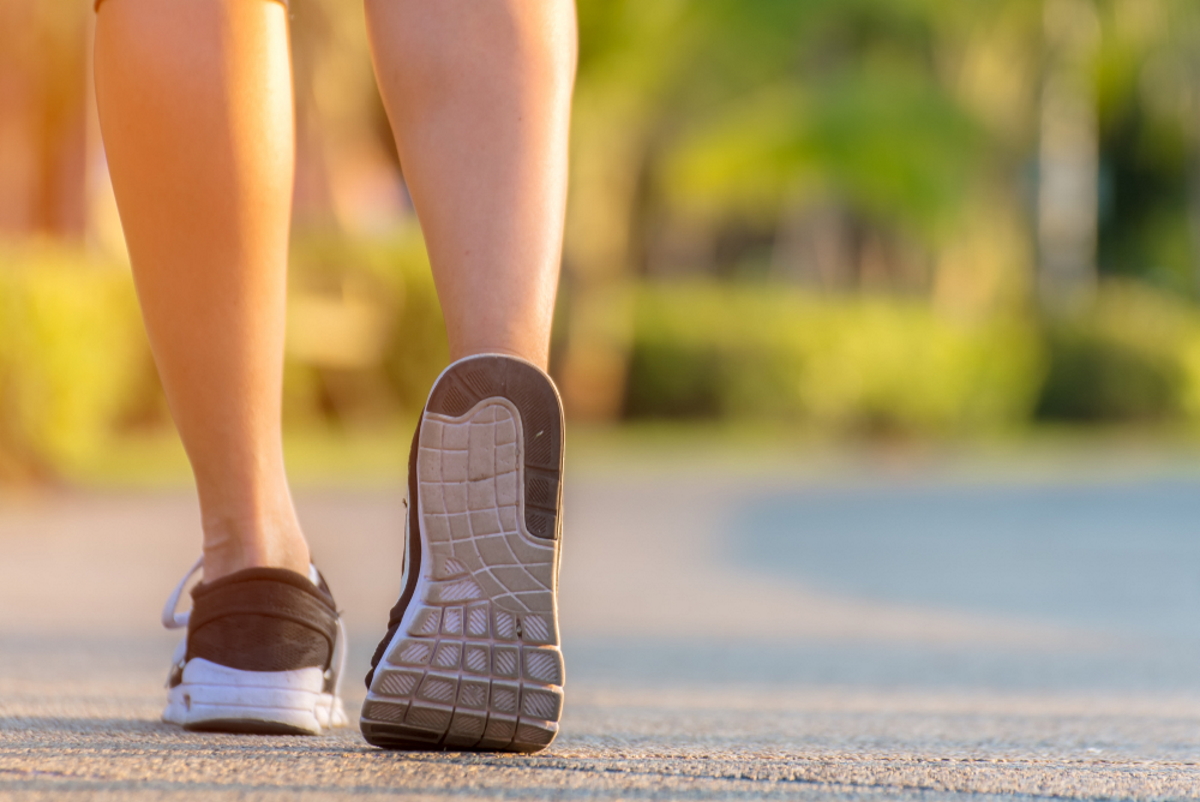Walking daily boosts health without extreme effort. Forget the 10,000-step myth—small, steady movement is what matters most.

@Wanida Prapan/123rf
Table of contents
We all know that moving our bodies is essential to feeling well—no matter how old we are. But here’s the thing: you don’t need a gym membership or fancy gear to benefit from physical activity. Sometimes, all it takes is a brisk walk around the block. And even if the word “brisk” makes you wince, you might be surprised to learn that even a gentle pace can do the trick.
There’s been a lot of talk about the so-called 10,000-step goal as the gold standard for good health. But is that number really a magic bullet?
10,000 steps: myth or benchmark?
The short answer is: not really. That number isn’t rooted in science—it actually comes from a 1960s Japanese marketing campaign. In reality, the number of steps you should take each day depends on several things: your age, body weight, fitness level, preexisting health conditions, and of course, your goals (whether you’re aiming for weight loss, improved breathing, muscle tone, or just stress relief).
There’s no one-size-fits-all number. It’s more useful to listen to your body and shape your routine around what it truly needs, not what your fitness tracker tells you.
How many steps are enough?
You don’t need to walk for miles and miles to reap the benefits. A recent study found that for people over 60, walking between 6,000 and 8,000 steps per day reduced the risk of premature death by 54%. For those under 60, the sweet spot is a bit higher—between 8,000 and 10,000 steps.
That’s not to say you can’t go further. Long walks can be a joy in themselves. But this data is clear: you don’t need heroic effort to stay healthy. What matters most is consistency over time. A short daily walk, done regularly, can protect against chronic disease and even lengthen your life.
Start small, stay steady
Jumping from zero to 8,000 steps a day might sound impossible, especially if you’ve spent years glued to a desk. But gradual progress is key—and it’s exactly what the World Health Organization recommends.
Begin with just 500 steps per day (roughly a 5-minute walk), then build up week by week. Add another 500 steps every seven days, and soon enough, you’ll find yourself moving more with less effort. The trick is to let your body adapt, gently but persistently.
Even a 10–15 minute walk can make a measurable difference, particularly if you’ve been sedentary. Short bursts of movement—what scientists call “snackable fitness”—can be just as powerful as longer sessions, especially at the start. The goal is to avoid injury, stay motivated, and let the habit take root.
You don’t need a pedometer
If the idea of tracking your steps sounds like yet another digital burden, don’t worry. While pedometers and smartwatches are nice, your smartphone can do the job just fine. There are dozens of free apps that log your movement accurately enough for most purposes—and some even reward you with real money or vouchers for walking.
At some point, you won’t even need the app. Once you get familiar with what 6,000 or 8,000 steps feel like in terms of time or distance, your body becomes the best tracker of all.
Pace doesn’t matter (much)
Let’s debunk another myth: you don’t have to walk fast to benefit from walking. Yes, moving at a brisk pace can slightly enhance the effects, especially for younger or fitter individuals—but what really counts is the distance you cover.
So if speed walking makes you feel awkward or winded, forget it. Go at your own rhythm. Consistency and enjoyment will serve you better in the long run than trying to chase a stopwatch.
It’s not about weight loss
One final point: if your main goal is shedding pounds, walking alone probably won’t cut it. Sure, it helps—it boosts circulation, lifts your mood, and gently supports your metabolism—but it’s not a high-calorie burner.
Walking 10,000 steps a day burns about 500 calories, depending on your pace and weight. That’s not insignificant, but compared to running, interval training, or strength workouts, it’s a light effort.
According to research published in the New England Journal of Medicine, intense physical activity paired with a healthy diet is far more effective for weight loss than walking alone. That said, walking can be a powerful complement to any fitness or weight loss program. It keeps your body engaged, your stress levels down, and your motivation up—without demanding too much in return.
